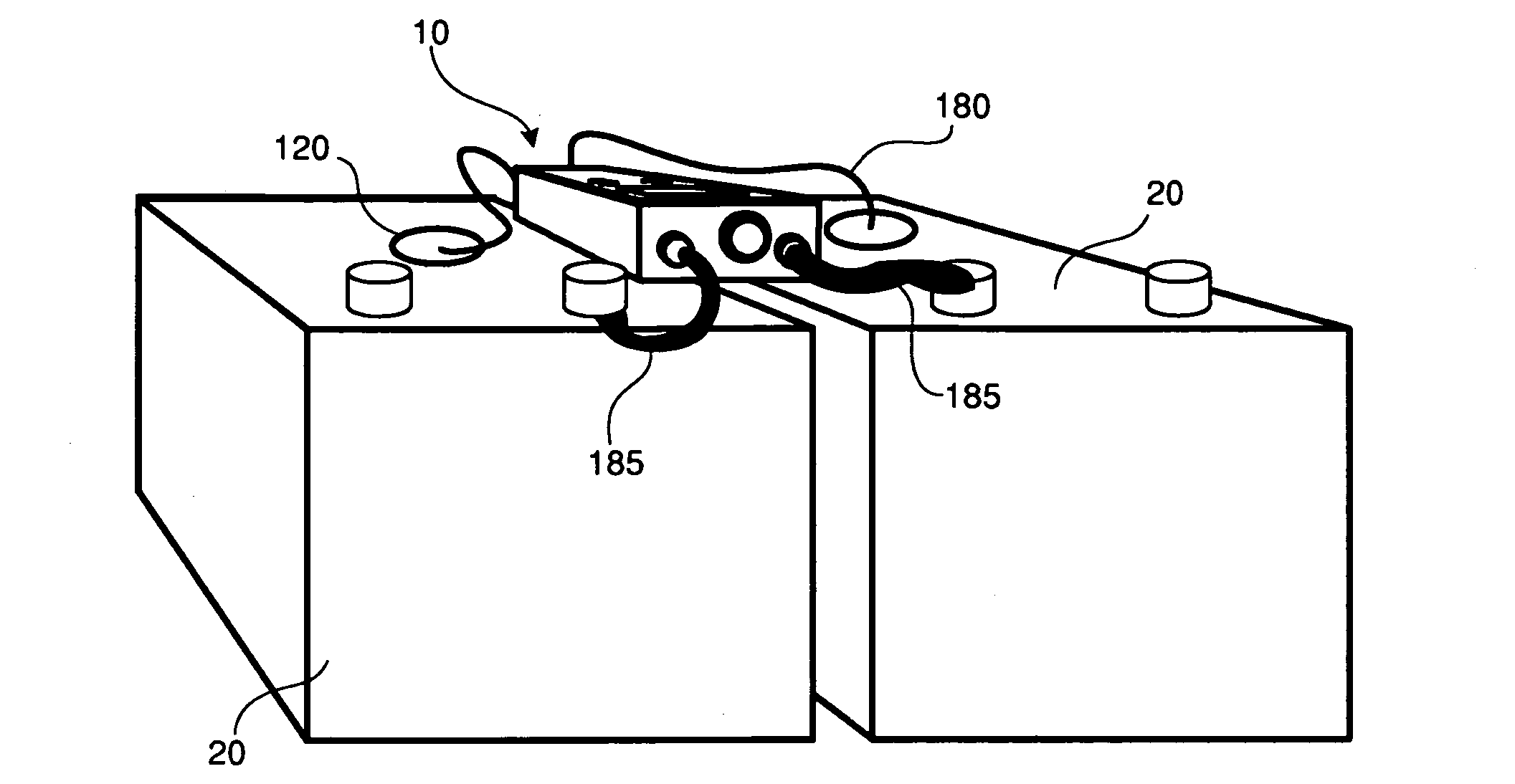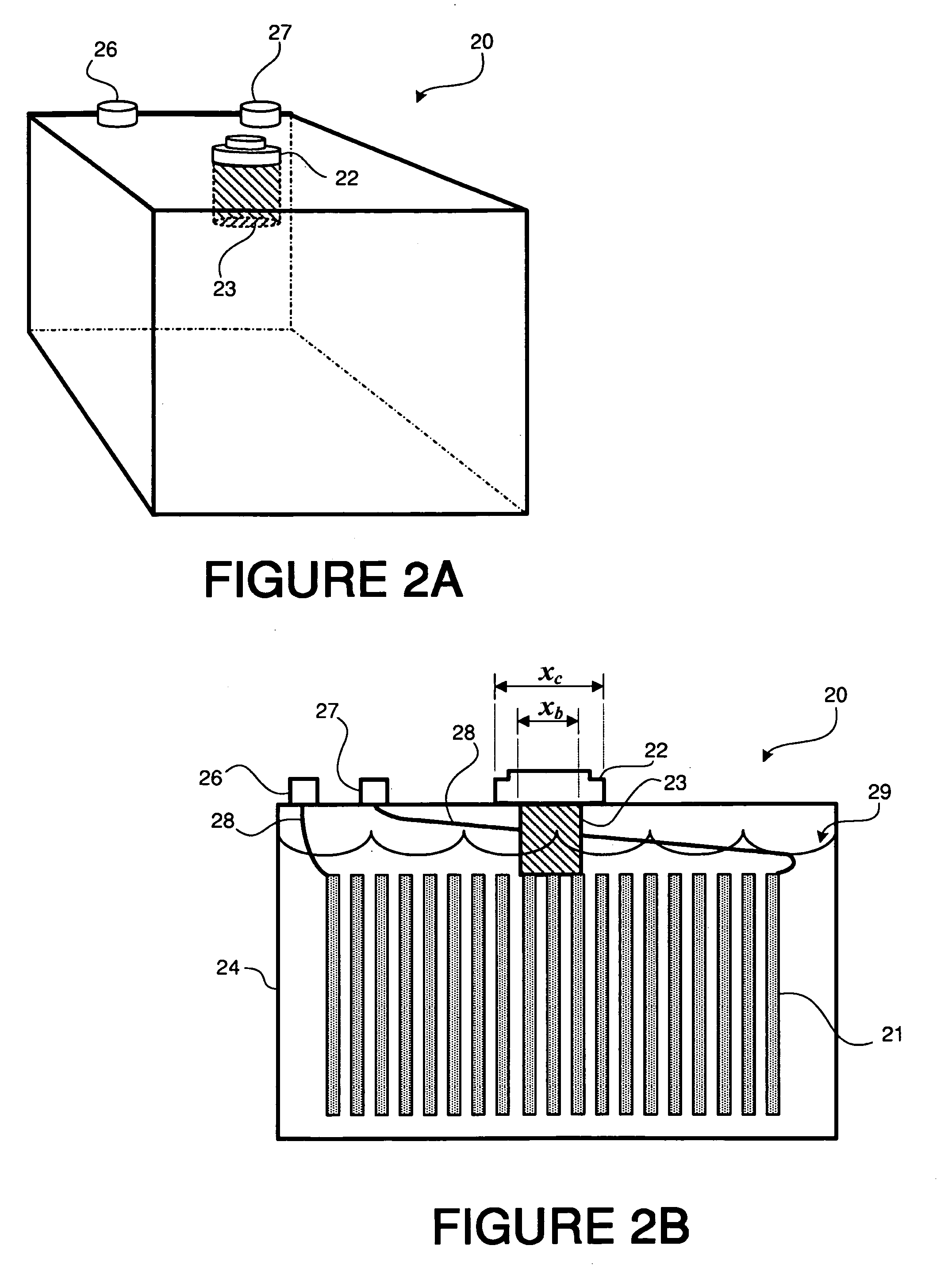In addition, the
chemistry of lead acid batteries is relatively uncomplicated, to the extent that the majority of automobile batteries found in cars and trucks worldwide, as well as the batteries that power
industrial equipment such as forklifts, are based on plates of common
metallic lead immersed in an electrolyte of water and
sulfuric acid (see, for example, FIG. 1).
However, certain factors and effects of lead acid batteries can reduce their useful lifetime, and therefore necessitate costly replacement or reconditioning.
The effects of
sulfation clog battery grids, impede recharging and can even expand and crack
battery cell plates as the crystalline
lead sulfate accumulates, destroying the battery.
Thus, not all of the lead consumed during
discharge is returned to the battery plates during recharge, and the amount of
usable active material necessary for generating
electricity declines over time.
Sulfation also adversely affects the charging cycle, resulting in longer charging times, less efficient and incomplete charging, excessive
heat generation (higher battery temperatures).
Increased battery temperatures can cause longer cool-down times and accelerate
corrosion.
Sulfation is particularly harmful when batteries are stored or not operated for period of time, while in a state of depleted charge, in part because recrystallization occurs in the absence of the usual cycles of breakdown and regeneration of amorphous
lead sulfate that occur during normal operation and recharging activities.
However, KONDO et al. relates only to a method for recycling lead acid batteries, and does not address extending the useful life or enhancing the performance of existing batteries.
Moreover, there are additional factors that can adversely
impact useful battery life and performance.
In addition to
sulfation, reduced lead acid battery life can also occur because of sub-optimal or insufficient levels of electrolyte being present in the battery, inter alia.
In particular, many varieties of lead acid batteries experience gradual loss of electrolyte fluid as a normal part of the battery's use cycle, which can be caused by
evaporation due to heat generated as a by-product during
discharge or recharging.
However, the process of checking water or electrolyte levels typically requires the operator to perform an inconvenient series of steps in order to access the batteries (for example, having to first open a battery compartment of a vehicle, then unscrew a valve cap on each
cell in a
battery pack in order to check fluid levels, and finally to replace the valve caps and close the battery compartment).
Moreover, the rate of fluid loss can vary depending on how often or how long the battery-powered equipment is operated, as well as ambient or internal battery temperature, inter alia, which can reduce the usefulness of a battery inspection schedule based on regular intervals.
As a result,
battery electrolyte levels frequently go unchecked despite possible adverse effects on the batteries, leading to substantially increased operation or replacement costs for batteries that
wear out early due to having been operated with insufficient fluid levels.
This can be dangerous because of the risk of ejecting harmful
battery electrolyte (which contains
sulfuric acid in aqueous or gelled solution, in the case of lead acid batteries) onto the retrofitter's own exposed eyes or
skin, or onto people or equipment in the vicinity of the battery.
The casings of lead acid batteries are typically made of thick, tough plastic, which renders drilling difficult and thus heightens the risk of accidents.
Furthermore, even careful drilling of holes to enable the
insertion of conventional electrolyte monitors into batteries nonetheless can result in harmful accumulation of resinous build-up, oily films and debris around the site of the drilled hole, caused by the emission of steam and other gases during battery operation.
Also, conventional electrolyte monitors do not include the ability to monitor battery temperature, nor to counteract the harmful effects of sulfation, which are an important factors that can affect battery life and performance.
 Login to View More
Login to View More  Login to View More
Login to View More 


